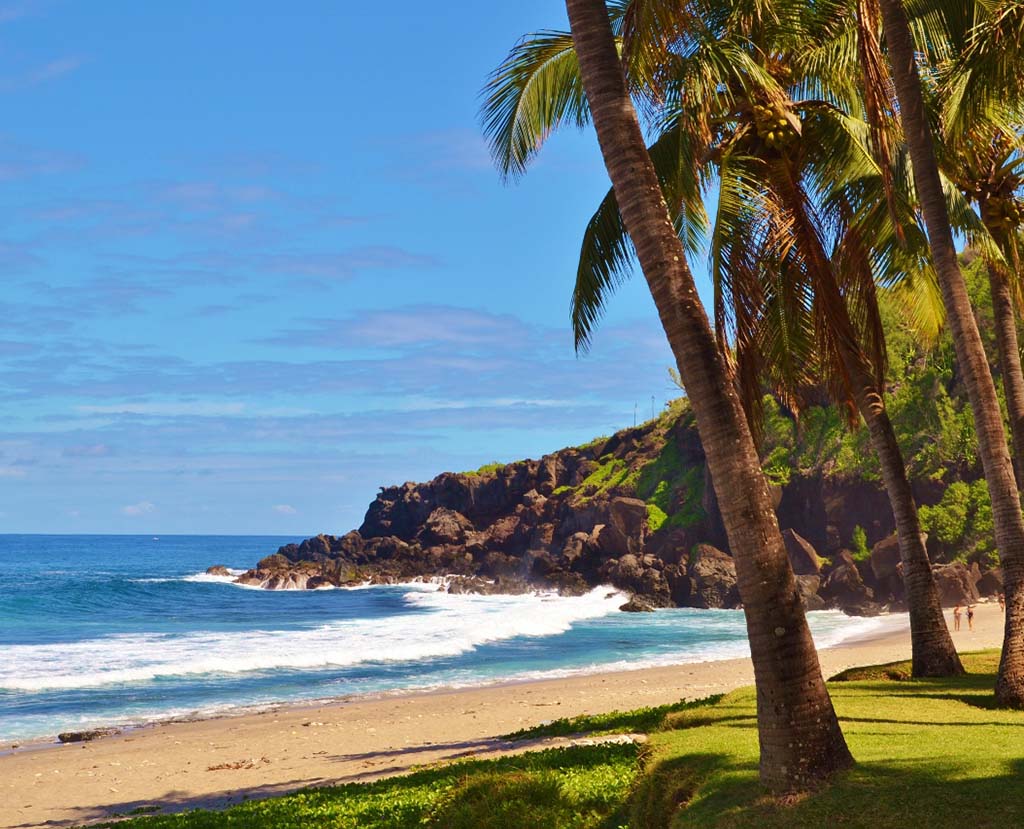Réunion Island, a beautiful gem in the Indian Ocean, is renowned for its unique volcanic landscapes, rich culture, and stunning beaches. If you’re considering a trip to this enchanting island, understanding some common questions can greatly enhance your travel experience. Here, I’ll provide detailed answers to some of the most frequently asked questions by tourists, helping you plan your visit to Réunion Island effectively.
Can We Swim on Réunion Island?
Yes, Réunion Island is an ideal destination for swimming. The island boasts numerous beaches with excellent swimming conditions, especially on the western and southern coasts. Here are a few particularly suitable spots:
- Hermitage-Les Bains Beach: This beach is renowned for its calm lagoon. The lagoon’s crystal-clear water and natural protection from strong waves make it perfect for swimming and snorkeling. The water temperature is comfortably warm year-round, adding to the overall enjoyment. The beach also features many restaurants and shops, providing convenience while you relax.
- Saline-les-Bains Beach: Another great beach for swimming, Saline-les-Bains offers white sandy shores and azure waters, creating a tropical paradise atmosphere. The lagoon here is also ideal for families and snorkeling enthusiasts. The beach is well-equipped with amenities, including changing rooms and showers, making it convenient for visitors.
However, not all beaches are suitable for swimming:
- Brisants Beach: While known for its excellent surfing conditions, Brisants Beach may pose a danger to swimmers due to its strong waves. If you are not experienced with strong surf or strong currents, it is advisable to choose a different beach.
- Saint-Leu Beach: This beach is known for its powerful waves, making it more suitable for surfers than for casual swimmers. If you plan to swim here, exercise extreme caution and be sure you have the necessary swimming skills and experience to handle strong currents and waves.
How Many Beaches Are There on Réunion Island?
Réunion Island boasts numerous beaches, each with its own unique characteristics. While there is no exact count, there are over 20 notable beaches on the island. These beaches are scattered across the western, southern, and eastern coasts, each offering different experiences.
- Western Beaches: Notable beaches include Brisants Beach, Hermitage-Les Bains Beach, and Saline-les-Bains Beach, known for their high-quality sand and clear waters.
- Southern Beaches: Such as Grand Anse Beach and Étang-Salé Beach, these beaches are popular for their distinctive geological features and picturesque surroundings.
- Eastern Beaches: While fewer in number, the eastern coast also offers beautiful beaches worth visiting, such as Roches Noires Beach.
These beaches range from bustling tourist spots to serene, secluded coves, catering to different preferences and needs. You can choose the beach that best suits your interests and activities.
What is the Most Beautiful Lagoon on Réunion Island?
The most famous and beautiful lagoon on Réunion Island is undoubtedly the lagoon at Hermitage-Les Bains Beach. This lagoon is celebrated for its clear water, warm temperatures, and fine white sand, making it an ideal location for snorkeling, swimming, and relaxation. Here are some detailed features of this lagoon:
- Clear Water: The lagoon at Hermitage-Les Bains Beach is renowned for its exceptional clarity. The water here is so transparent that visibility often extends several meters deep, allowing for an unparalleled snorkeling experience. When you swim through the lagoon, you’ll be greeted by an underwater world teeming with vibrant marine life. Schools of colorful fish dart around the coral reefs, and you may even spot the occasional sea turtle gliding gracefully by. The pristine conditions of the water make it easy to observe the intricate details of the coral formations, including their diverse shapes and colors. The clear water enhances the overall experience by providing unobstructed views of the lagoon’s natural beauty and making underwater exploration both enjoyable and safe.
- Warm Water Temperature: One of the highlights of the lagoon’s water is its consistently warm temperature. The water remains pleasantly warm throughout the year, with temperatures typically ranging between 25°C and 30°C (77°F to 86°F). This stable temperature is a significant advantage, as it ensures a comfortable swimming experience regardless of the season. During the hot summer months, the warmth of the water offers a refreshing escape from the heat, while in the cooler winter months, it remains inviting and soothing. This consistent warmth means you can enjoy swimming, snorkeling, or simply wading in the lagoon at any time of the year without feeling a chill.
- Surrounding Facilities: The lagoon at Hermitage-Les Bains Beach is well-equipped with a range of facilities designed to enhance your beach experience. Nearby, you’ll find a variety of restaurants offering local cuisine and refreshing beverages, perfect for a meal or a snack after spending time in the water. There are also several shops where you can purchase beach essentials, souvenirs, or gear for water activities. For your convenience, there are clean and well-maintained changing rooms and shower facilities available, allowing you to freshen up after swimming or snorkeling. Additionally, the beach area is equipped with sunbeds and umbrellas for rent, providing a comfortable space to relax and enjoy the beautiful surroundings. These amenities ensure that your visit to the lagoon is both enjoyable and convenient, allowing you to fully relax and make the most of your time at this beautiful beach.

Additionally, the lagoon at Saline-les-Bains Beach is also a must-see. It is known for its clear waters and beautiful natural setting, making it a wonderful spot for families and couples to spend a peaceful time.
Why Does Réunion Island Have Black Sand Beaches?
The black sand beaches on Réunion Island are a result of the island’s volcanic activity. The island’s geological structure contains a significant amount of volcanic rock. When these volcanic rocks are eroded by the ocean and wind, they break down into black sand grains. This unique geological phenomenon gives Réunion Island’s black sand beaches their distinctive appearance. Here are some details about these black sand beaches:
- Role of Volcanic Rock: The formation of black sand beaches is closely tied to Réunion Island’s volcanic history. After volcanic eruptions, magma cools and forms volcanic rocks. Over time, these rocks are broken down into fine black sand particles through erosion.
- Geological Features: The color and texture of black sand beaches differ significantly from traditional golden sand beaches, offering visitors a unique visual experience. The black sand glistens under the sun, adding a mysterious charm to the beach.
- Examples of Black Sand Beaches: For example, Étang-Salé Beach is a well-known black sand beach. The contrast between the black sand and the blue sea creates a striking visual effect, providing excellent photo opportunities and natural beauty.
Which Beaches Should Be Avoided on Réunion Island?

While Réunion Island has many beautiful beaches, some may require special attention due to environmental conditions or safety concerns. Here are some beaches to be cautious about or avoid:
- Brisants Beach: Known for its strong waves suitable for surfing, Brisants Beach can be dangerous for casual swimmers. If you lack surfing experience or are unfamiliar with strong surf, it is best to choose a different beach.
- Saint-Leu Beach: This beach is also known for its strong waves, making it more suitable for surfers than for swimmers. If you intend to swim here, be extremely cautious and ensure you have the necessary skills to handle strong currents and waves.
- Certain Beaches Affected by Storms or Tides: During storms or specific tidal conditions, some beaches may experience larger waves or dangerous currents. In such cases, it is advisable to avoid these beaches or consult local safety information before visiting.
Réunion Island’s beaches, with their stunning natural beauty and unique geological features, attract visitors from around the world. From the mysterious allure of black sand beaches to the serene beauty of crystal-clear lagoons, these beaches offer a diverse range of experiences. I hope that by answering these common questions, you can better plan your trip to Réunion Island and ensure a pleasant and safe holiday. If you have any further questions or need additional assistance, feel free to reach out to me. I wish you a memorable and enjoyable trip to this captivating island!


